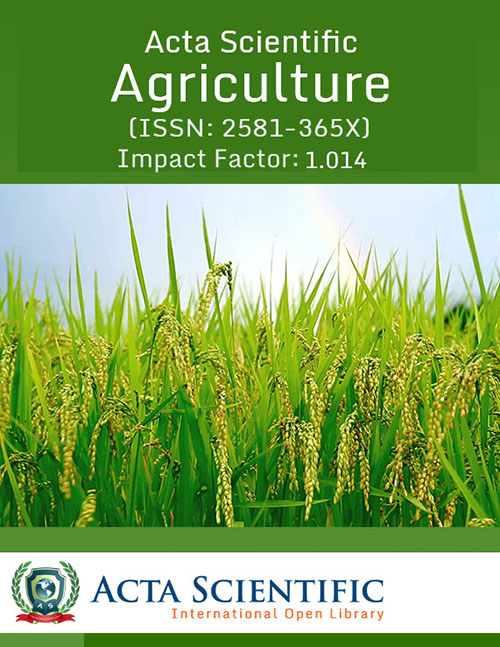Malnutrition, particularly in the form of micronutrient deficiencies, remains a critical global health issue, affecting millions of individuals across various demographics. The term "hidden hunger" refers to deficiencies in essential vitamins and minerals that are not immediately apparent but have severe long-term health consequences. According to the World Health Organization (WHO), approximately 2 billion people (One in three individuals) globally suffer from hidden hunger, with deficiencies in iron, Zinc, vitamin A, and iodine being the most prevalent [1]. India is among the nations with the quickest rates of economic, educational, and technological growth. India's failure to address malnutrition, which harms the nation's socioeconomic development, persists despite its economic gains. India is home to more than one-third of the world's undernourished children. The present situation demonstrates how several international organizations, governments, businesses, and non-governmental organizations are working together to end micronutrient deficiencies in humans.
The factor responsible for malnutrition
A number of important elements are involved in children's chronic malnutrition. The mother's nutritional state is among the most crucial. In India, undernourishment causes iron deficiency anemia in 56% of women and 56% of teenage girls between the ages of 15 and 19 years old, with approximately 36% of the female population being underweight. It is estimated that 48% of Indian children under the age of five have stunted growth as a result of malnutrition as [2].
Strategies to combat malnutrition
Three major strategies to attain nutritional security are dietary diversification, medical supplementation, and biofortification. The current review provides an overview of biofortification and breeding for biofortification of staple crops for nutritional security.
Biofortification is an innovative agricultural strategy aimed at enhancing the nutritional quality of staple crops by increasing their levels of essential vitamins and minerals. This approach is particularly important in combating hidden hunger, which refers to the chronic deficiency of micronutrients such as vitamins and minerals in the human diet. Biofortification offers a sustainable and cost-effective solution to address malnutrition by improving the nutritional content of widely consumed crops. To eliminate malnutrition, the dietary pattern must include a minimal amount of vital nutrients, such as proteins, fats, carbs, vitamins, and minerals. Worldwide, a wide variety of crops, including grains, pulses, oilseeds, and fodder crops, are cultivated to supply this demand. Because developing nations lack variety in their diets, field crops must provide vital nutrients for a sufficient diet. Even though there are more than 50,000 edible plants in the world, just fifteen of them provide 90% of the food consumed. Which, two-thirds of the global dependency on staple crops covers rice, maize, and wheat. Therefore, the researcher places a strong emphasis on boosting the nutritional profile of these crops. The four primary methods for crop biofortification that are often utilized are agronomic biofortification, which focuses on improving mineral mobilization and solubilization, traditional plant breeding, genetic engineering, and gene editing, which primarily target cultivar improvement concerning micronutrients. According to research, rice lacks iron, zinc, and pro-vitamin A, which may contribute to anemia, night blindness, and blindness, and is a major source of hidden hunger in rice-eating regions globally. For wheat to effectively provide zinc, iron, selenium, pro-vitamin A, grain anthocyanins, and essential amino acids, biofortification is required. However, high-quality protein, antioxidants, vitamin C, vitamin A, and anti-nutrient components are lacking in maize and need biofortification. The four main strategies that are commonly used in crop biofortification are as follows: conventional plant breeding, genetic engineering, and gene editing mainly focus on cultivar improvement in terms of micronutrient accumulation, bioavailability, and suppression of anti-nutritional factor; agronomic biofortification, on the other hand, focuses on better mineral solubilizing and mobilization. Agronomic biofortification is a cheap and simple technique, but it involves careful consideration of the kind of nutrients to be used, how they are applied, and the surrounding conditions. This strategy emphasizes increased nutrient availability to the plants, their efficient uptake and movement within the plants, as well as an increase in microbial activity to support this uptake. Conventional breeding, apart from agronomic biofortification, depends on the genetic diversity of the trait of interest (TOI) within the gene pool. Using traditional crossing approaches, the required genes are pyramided, and then segregation populations are thoroughly screened. Essential micronutrients come from the genes carried by crop wild relatives (CWRs).
To meet the required levels of protein and normal nutritional concentrations, modern crops will inevitably inherit genetic diversity from their wild species. The biofortification of crops is made much easier by modern breeding methods like as genome editing, RNA interference (RNAi), and transgenic breeding, which provide new opportunities for the emergence of specific genetic diversity not found in the gene pool. Transgenic breeding offers a more effective way to address hidden hunger by combining genes that are absent from a crop gene pool. It also helps in overexpression or silencing of different genes of interest. For instance, ectopic overexpression of the TaFer1-A and OsNAS2 genes resulted in notable iron accumulation in wheat grains. While silence of the TaABC13 transporter gene and the phytochrome gene dropped the formation of phytic acid (18–19%) and boosted the bioavailability of iron and zinc. Rice is biofortified with different compounds like Fe, Zn, and vitamins A, B1, B6, and E. Another work presents how overexpressing RLRH1 and RLRH2 using a modified rice glutelin1 promoter biofortified endogenous rice lysine-rich histone proteins. Resultant, transgenic rice lysine content boosts up to 35% when compared to wild-type rice. Golden rice was thought to be the classical example of biofortification making use of transgenic because of its noteworthy accumulation of pro-vitamin A. In maize, the PSY1 gene producing phytoene synthase and the bacterial Crtl genes resulted in a greater concentration of vitamin A. RNAi has created and opened new opportunities for agricultural development. As a technique, it is more accurate, reliable, effective, and superior to antisense technology. Through biofortification and bio-elimination, RNAi offers a platform for the integration of biotic and abiotic stress tolerance as well as access to high-quality food. It is often used to improve crop's nutritional quality and eliminate pollutants and food allergies. RNAi was used to disrupt a gene of the Phytic Acid (PA) biosynthesis pathway in wheat. Consequently, homozygous transgenic lines of wheat show reduced PA accumulation (26–58%), and increased grain phosphate, zinc, and iron contents. Employing RNAi increases the carotenoid and lysin content in rice. Enhance the digestibility of sorghum by suppressing the gene that makes it less digestible using RNAi silencing. Although the use of genome editing for the biofortification of crops was less common, a few notable instances are included here. It was utilized to mutate the TaVIT2 gene to increase the quantity of zinc in wheat and knock down the rice OsVIT2 gene to boost Fe availability.
Conclusion
Biofortification emerges as a promising and sustainable solution to combat the pervasive issue of micronutrient malnutrition. By strategically enhancing the nutritional content of staple crops, biofortification offers a cost-effective and accessible means to improve the dietary quality of vulnerable populations. Consumption of nutrient-dense meals and proper nutrition are closely associated with good health. However, because of its detrimental effects on the world's population, hidden hunger poses an important challenge to ensuring acceptable healthy lives. The most vulnerable groups to this problem are mothers and small children in developing nations. The efficiency of an effective breeding program for biofortification is based on the availability of genetic diversity, reduction of anti-nutrients, and increased concentrations of promotor’s substances, i.e., amino acids (methionine, lysine, and cysteine) and ascorbic acid (vitamin C) that can enhance absorption of essential elements. This approach not only addresses the nutritional deficiencies that contribute to various health problems but also promotes food security and resilience. By strategically implementing biofortification strategies, we can contribute to a healthier and more equitable future for all. By investing in biofortification research and development, we can harness its potential to create a more equitable and sustainable food system that benefits people worldwide.
Bibliography
- Dhaliwal SS., et al. “Biofortification—A frontier novel approach to enrich micronutrients in field crops to encounter the nutritional security”. Molecules4 (2022): 1340.
- World Bank. “World bank report on malnutrition in India”. Washington, DC: The World Bank; (2009).
Copyright: © 2024 Sandeep Kumar., et al. This is an open-access article distributed under the terms of the Creative Commons Attribution License, which permits unrestricted use, distribution, and reproduction in any medium, provided the original author and source are credited.


















